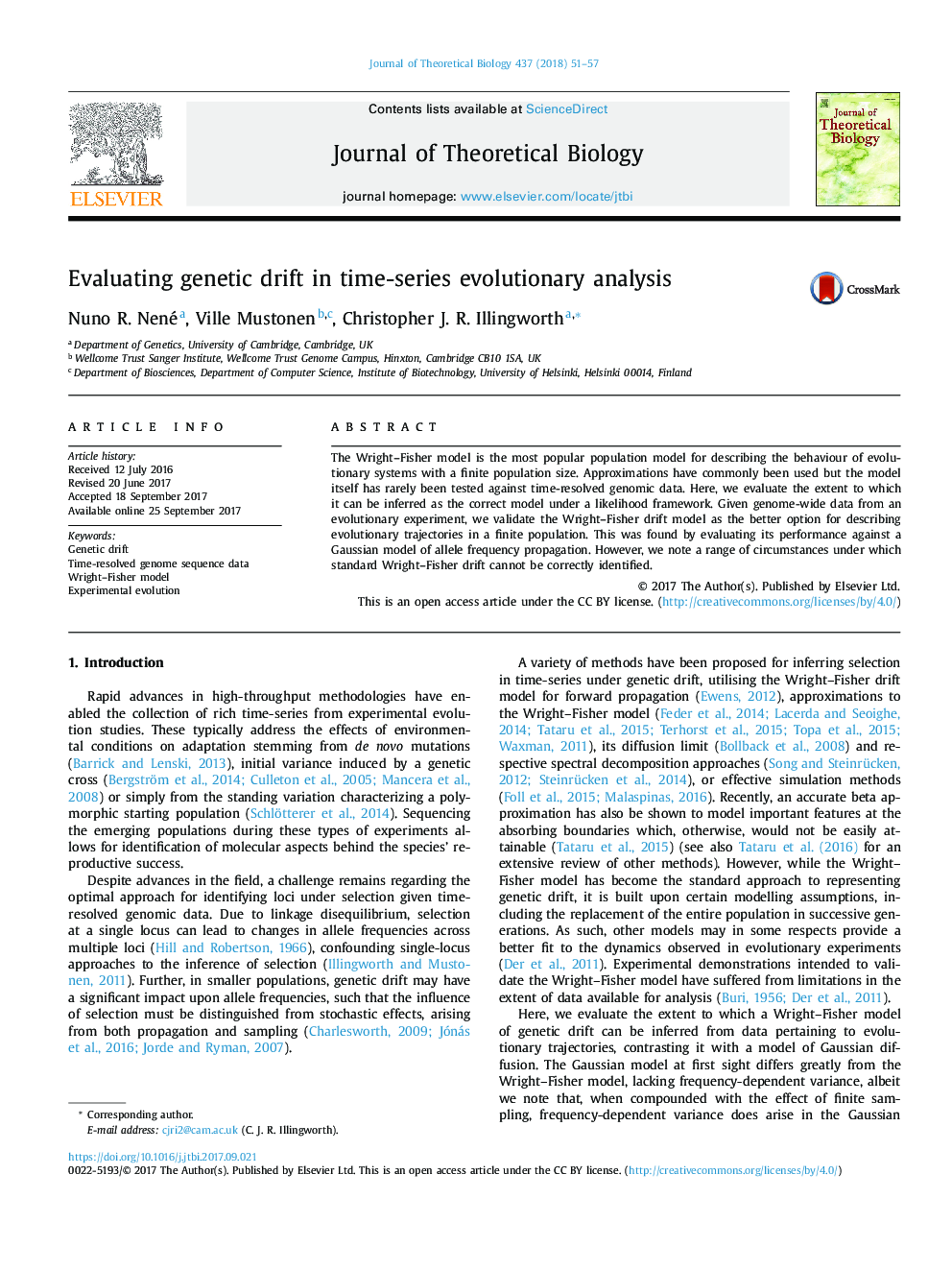| Article ID | Journal | Published Year | Pages | File Type |
|---|---|---|---|---|
| 8876902 | Journal of Theoretical Biology | 2018 | 7 Pages |
Abstract
The Wright-Fisher model is the most popular population model for describing the behaviour of evolutionary systems with a finite population size. Approximations have commonly been used but the model itself has rarely been tested against time-resolved genomic data. Here, we evaluate the extent to which it can be inferred as the correct model under a likelihood framework. Given genome-wide data from an evolutionary experiment, we validate the Wright-Fisher drift model as the better option for describing evolutionary trajectories in a finite population. This was found by evaluating its performance against a Gaussian model of allele frequency propagation. However, we note a range of circumstances under which standard Wright-Fisher drift cannot be correctly identified.
Related Topics
Life Sciences
Agricultural and Biological Sciences
Agricultural and Biological Sciences (General)
Authors
Nuno R. Nené, Ville Mustonen, Christopher J. R. Illingworth,
